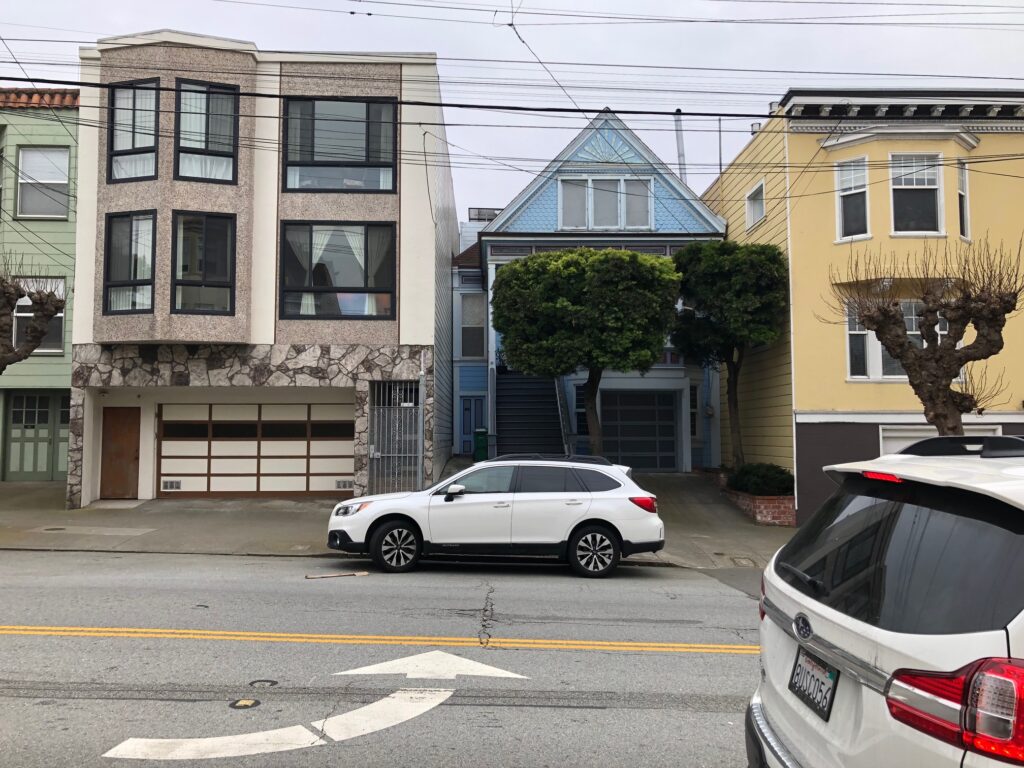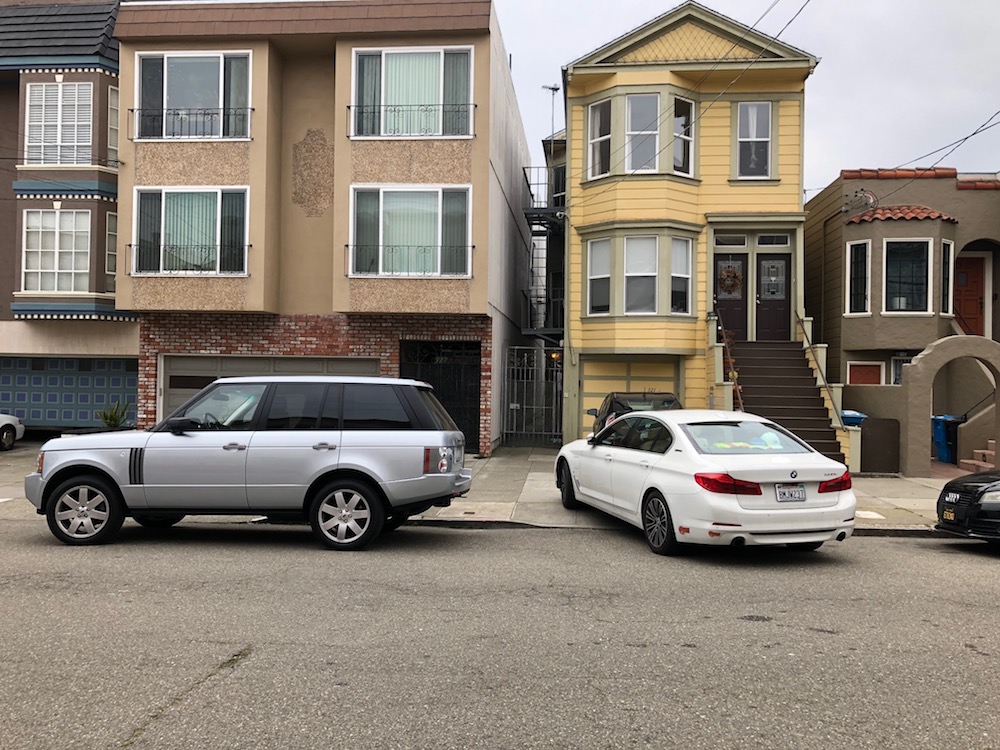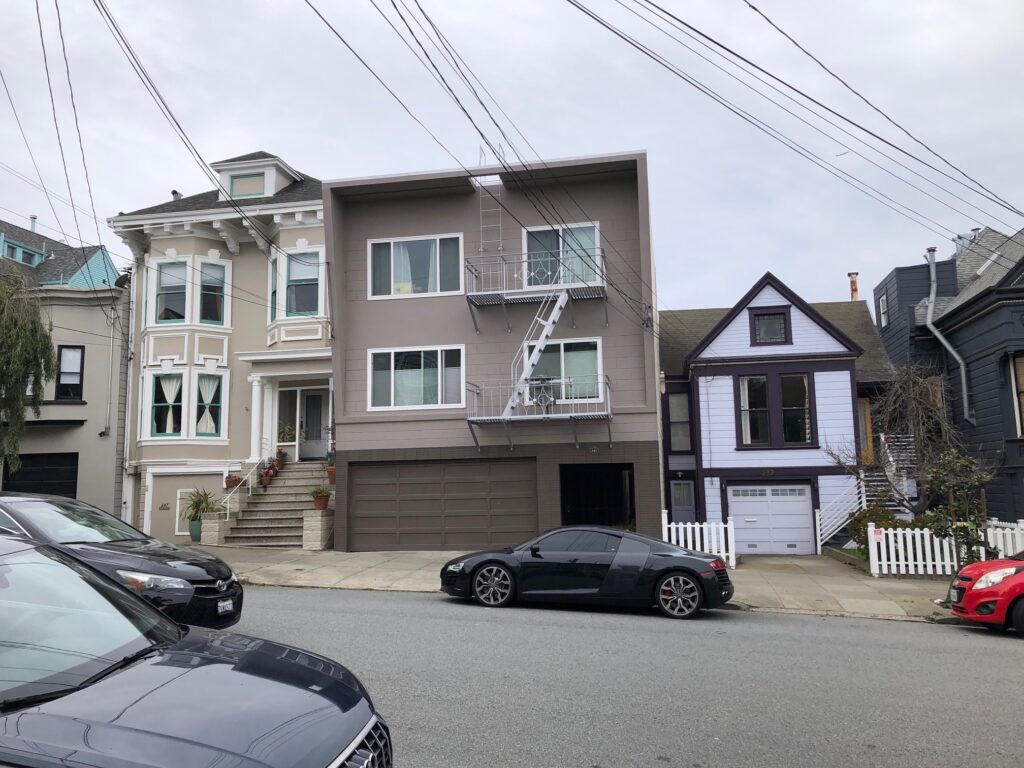The most dramatic change in neighborhood zoning rules since the 1970s comes before the Board of Supes Land Use and Transportation Committee Monday/7.
A measure by Sups. Rafael Mandelman and Matt Haney would accomplish a long-time goal of the Yimby movement: It would end single-family zoning in San Francisco.

The measure would allow as many as four housing units in most parts of the city that are now zoned as single-family housing, and would allow six-unit buildings on corner lots.
The goal of the measure, Mandelman says, is to let developers create more dense housing, particularly on the West Side of town, although it would also impact the Southeast part of town, which also has a lot of single-family zoning.
Behind this is the fundamental intellectual construct of the Yimby movement: The lack of affordable housing is a matter of supply and demand, and if developers can build more dense housing, prices will come down.
This is, at the very least, a matter of considerable debate among housing economists, and there is a lot of evidence that more market-driven density doesn’t automatically create more affordability. In some cases, it has the opposite effect.
I have no problem with density; San Francisco is full of wonderful dense neighborhoods like North Beach. Density makes transit work better. There are a lot of advantages. And single-family zoning has been used historically as a way to keep people of color out of exclusive white neighborhoods.
I just don’t see increased density in our current late-stage capitalist system as a recipe for more affordable housing—and neither do a lot of people who spent their lives studying the issue.
But there’s another element of this that hasn’t been discussed much. You can’t build as much housing as Haney and the Yimbys are suggesting—that’s 100,000 new units in San Francisco—without demolishing existing housing.
The City Planning Department estimates that there are enough “soft sites”—places that don’t have existing housing on them—to build perhaps 30,000 units.
More than that and you have to bring in the bulldozers.
Mandelman told me that his proposal makes no change in the current rules around demolition, which requires a conditional-use permit. In the past 20 years, demolition of existing housing has been very limited.
In fact, City Planning Department records show that only a small number of housing units are now getting torn down in San Francisco.
But I lived through the era in the 1980s when hundreds of vintage Victorian houses—buildings that will never exist again, that are part of the city’s history—were bulldozed so that developers could put up cheaply made multi-unit buildings.
The developers made a whole lot of money doing this. The new units were and are no more affordable than the ones they tore down.
The current legislation is potentially—and I say that because it all depends on how the city interprets and enforces the rules—a recipe for the demolition of existing housing on a level we have never seen since the 1906 earthquake.
In the mid-1980s, the Inner Richmond was Ground Zero for developers who organized under the banner of the Residential Builders Association. Their methods were simple: Buy an old Victorian, which might be a single-family building or several flats, for $300,000, tear it down, and replace it with six or eight units that each are worth $200,000.
Do the math.

The RBA, run by a guy named Joe O’Donoghue, said the builders were providing new housing. And they were: Those multi-unit properties added to the city’s rental stock.
But in the process, they were destroying something that will never exist again.
The city’s old Victorians were constructed from old-growth Redwood and Douglas Fir, and 90 percent of those trees on the North Coast were cut down, in part to build San Francisco. That was terrible, a massive ecological tragedy.
But it created incredibly strong housing, such that much of it survived the 1906 earthquake. And those Victorians and Eduardians are part of the city’s, and the world’s, architectural history. Nothing like that will ever be built again, anywhere in the world.
What the RBA did was wreck the structures, and the old-growth timber went into landfills. The developers didn’t carefully deconstruct the old buildings and save the materials; that would cost too much, and cut into profits.
There was nothing environmentally sound about this practice.
From San Francisco Heritage:
In the mid-1980s, the Richmond District became an attractive neighborhood for lucrative in-fill developments, with contractors demolishing nineteenth-century houses and cottages for large flats and apartment buildings … Whereas the traditional building pattern of the neighborhood was for multi-unit buildings to occupy corner lots, new hulking “Richmond Specials” with featureless facades were breaking up mid-block rows of single-family homes.
I’m not here to talk about “neighborhood character,” a term that’s been used in the past for lots of ugly, racist policies. But I think there is at least some value to preserving architectural history.

Gabriel Metcalf, the former director of SPUR, and I used to argue about this; he told me that “San Francisco cares more about buildings than people.” That is: We should care less about the old Victorians and more about building more housing.
I could maybe get on board, with a deep sigh and great sadness, if I thought that destroying some of the city’s architectural history would really make housing more affordable. I have yet to see any evidence whatsoever to suggest that would be the result.
The rezoning that Mandelman and Haney are proposing doesn’t apply just to non-market affordable units. It does nothing at all to fund or create more affordable housing. It just lets private developers build more luxury condos in what are now low-density neighborhoods.
But let’s step back here. Most of the West Side of town is not vintage Victorians. The Outer Sunset and the Outer Richmond buildings were constructed in the 20th Century, some of them in the post-War era, and they aren’t all exceptional architectural gems.
Mandelman told me he agreed that there’s danger in the potential demolition of important old buildings, even if they aren’t officially historic landmarks. “But,” he asked, “do we really care about some buildings from the 1950s?”
Good question. Older buildings, even from the 1950s, are less well insulated, use more energy, and could be replaced with more environmentally sound units. Many have no real historic value.
So what happens if we let developers demolish single-family homes in the Sunset and Richmond and Bayview and put up condos or apartment buildings?
(For starters: Much of the new construction would likely be condos. The legislation specifically allows lots to be subdivided for condo conversion.)
If you look at the data, those areas have the highest percentage of home ownership in the city—but there are also plenty of tenants. Homeowners won’t be displaced unless they sell (or face foreclosure). But tenants would absolutely be displaced, and the odds that they would have the right or the ability to move into the new units is small.
The single-family-zoned areas of San Francisco have by far the highest percentage of families with kids and overall the highest percentage of seniors. Many of the buildings house multi-generational families.
The new units that developers will build, based on current trends of what “pencils out,” will be much smaller and aimed at people who are less likely to have kids or older relatives living with them. That’s what makes the highest profit these days.
Again, the fundamental issue: Does San Francisco want developer profit to drive our land-use and housing decisions?
Sup. Ahsha Safai also has a housing measure before the Land Use and Transportation Committee; his would give a bonus to developers who build multi-family housing if one unit is affordable to people making between 110 percent and 140 percent of the city’s Average Median Income, which means a family earning up to $165,200.
I asked Haney whether his plan to build 100,000 new units in San Francisco will require demolitions of existing housing. Although he pretty much always answers my questions, he never replied to that one.
The meeting starts at 1:30pm.



